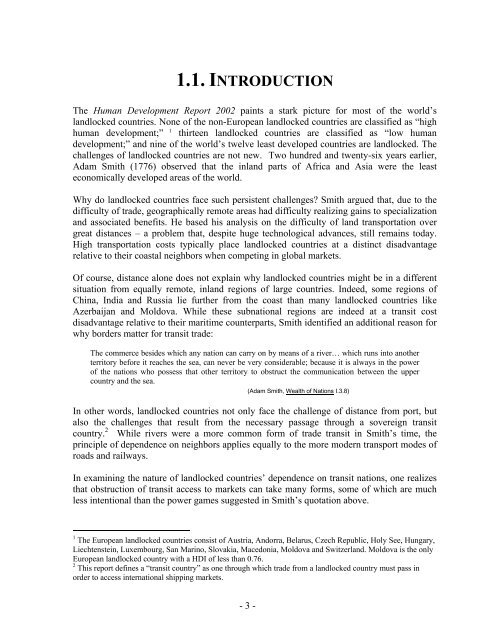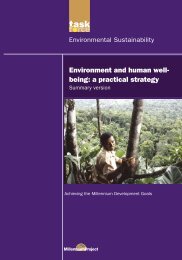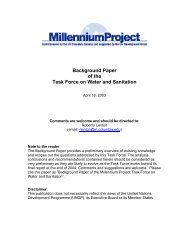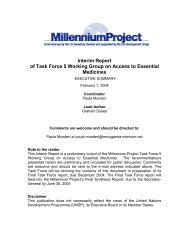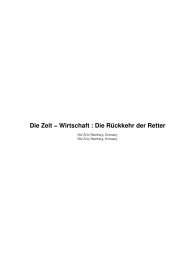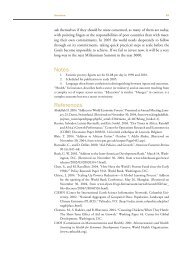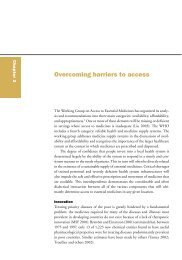the challenges facing landlocked developing countries: a case study ...
the challenges facing landlocked developing countries: a case study ...
the challenges facing landlocked developing countries: a case study ...
Create successful ePaper yourself
Turn your PDF publications into a flip-book with our unique Google optimized e-Paper software.
1.1. INTRODUCTION<br />
The Human Development Report 2002 paints a stark picture for most of <strong>the</strong> world’s<br />
<strong>landlocked</strong> <strong>countries</strong>. None of <strong>the</strong> non-European <strong>landlocked</strong> <strong>countries</strong> are classified as “high<br />
human development;”<br />
1 thirteen <strong>landlocked</strong> <strong>countries</strong> are classified as “low human<br />
development;” and nine of <strong>the</strong> world’s twelve least developed <strong>countries</strong> are <strong>landlocked</strong>. The<br />
<strong>challenges</strong> of <strong>landlocked</strong> <strong>countries</strong> are not new. Two hundred and twenty-six years earlier,<br />
Adam Smith (1776) observed that <strong>the</strong> inland parts of Africa and Asia were <strong>the</strong> least<br />
economically developed areas of <strong>the</strong> world.<br />
Why do <strong>landlocked</strong> <strong>countries</strong> face such persistent <strong>challenges</strong>? Smith argued that, due to <strong>the</strong><br />
difficulty of trade, geographically remote areas had difficulty realizing gains to specialization<br />
and associated benefits. He based his analysis on <strong>the</strong> difficulty of land transportation over<br />
great distances – a problem that, despite huge technological advances, still remains today.<br />
High transportation costs typically place <strong>landlocked</strong> <strong>countries</strong> at a distinct disadvantage<br />
relative to <strong>the</strong>ir coastal neighbors when competing in global markets.<br />
Of course, distance alone does not explain why <strong>landlocked</strong> <strong>countries</strong> might be in a different<br />
situation from equally remote, inland regions of large <strong>countries</strong>. Indeed, some regions of<br />
China, India and Russia lie fur<strong>the</strong>r from <strong>the</strong> coast than many <strong>landlocked</strong> <strong>countries</strong> like<br />
Azerbaijan and Moldova. While <strong>the</strong>se subnational regions are indeed at a transit cost<br />
disadvantage relative to <strong>the</strong>ir maritime counterparts, Smith identified an additional reason for<br />
why borders matter for transit trade:<br />
The commerce besides which any nation can carry on by means of a river… which runs into ano<strong>the</strong>r<br />
territory before it reaches <strong>the</strong> sea, can never be very considerable; because it is always in <strong>the</strong> power<br />
of <strong>the</strong> nations who possess that o<strong>the</strong>r territory to obstruct <strong>the</strong> communication between <strong>the</strong> upper<br />
country and <strong>the</strong> sea.<br />
(Adam Smith, Wealth of Nations I.3.8)<br />
In o<strong>the</strong>r words, <strong>landlocked</strong> <strong>countries</strong> not only face <strong>the</strong> challenge of distance from port, but<br />
also <strong>the</strong> <strong>challenges</strong> that result from <strong>the</strong> necessary passage through a sovereign transit<br />
country. 2 While rivers were a more common form of trade transit in Smith’s time, <strong>the</strong><br />
principle of dependence on neighbors applies equally to <strong>the</strong> more modern transport modes of<br />
roads and railways.<br />
In examining <strong>the</strong> nature of <strong>landlocked</strong> <strong>countries</strong>’ dependence on transit nations, one realizes<br />
that obstruction of transit access to markets can take many forms, some of which are much<br />
less intentional than <strong>the</strong> power games suggested in Smith’s quotation above.<br />
1 The European <strong>landlocked</strong> <strong>countries</strong> consist of Austria, Andorra, Belarus, Czech Republic, Holy See, Hungary,<br />
Liechtenstein, Luxembourg, San Marino, Slovakia, Macedonia, Moldova and Switzerland. Moldova is <strong>the</strong> only<br />
European <strong>landlocked</strong> country with a HDI of less than 0.76.<br />
2 This report defines a “transit country” as one through which trade from a <strong>landlocked</strong> country must pass in<br />
order to access international shipping markets.<br />
- 3 -


